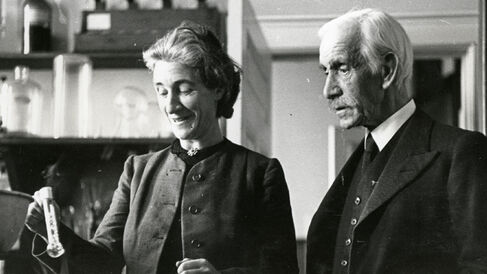The legacy of Hopkins

Looking from the twenty-first century at the period of Hopkins' chairmanship of the Department and especially at the inter-war years, the breadth of activity is simply astonishing for what today would be considered to be a small laboratory. In addition to Hopkins' own work on mammalian nutrition and redox reactions, Rudolf Peters, Francis Roughton and Robin Hill worked on haem-protein compounds, specifically haemoglobin and cytochromes, Norman Pirie was carrying out pioneering studies on plant viruses and discovering viral RNA, Marjory Stephenson together with Margaret Whetham, the Canadian "Harry" Quastel and Ernest Gale worked on bacterial metabolism, Dorothy Jordan Lloyd with Pirie, Richard Synge, Kenneth Bailey and Frederick Sanger were protein chemists, whilst John Burdon Sanderson Haldane and Rose Scott-Moncrief were inventing biochemical genetics through the study of flower pigments.
All of this was founded on Hopkins' vision of the way in which biochemical investigation would reveal an underlying unity of biochemical processes across the living world. In equal measure, his extraordinary perception in judging scientists and his gifts as a manager of men and women brought the best from the eclectic group that he assembled, both as individuals and as members of the Department. Since that time the many thousands of students and scientists who have passed through Hoppy's Department have trodden a privileged path and all are indebted to the 'Father of British Biochemistry'.
